When I was a kid playing Dungeons & Dragons there weren’t many options when looking for parts to enhance your game. The hobby was relatively new and the market was just ramping up. You may be thinking, “here we go, another things were better back in the day statement”. Not so. I’m actually stunned, amazed and really happy about where things are for D&D and associated parts of the hobby right now.
Some lucky few of us as kids were able to work for or add to the Christmas list official D&D miniatures. I’ve managed to hang on to those, but I no longer have any of the other things we used to supplement our game. One of the things we used to do was carve up any corrugated cardboard we could lay out hands on and cut them up into various combinations of squares. These flat ’tiles’ became what we used to represent the fabled 10′ x 10′ stone corridor that has become synonymous with classic dungeon crawls. I clearly remember the shoe box of cardboard I had filled with various combinations of corridor or room that could be laid out to show the ‘surroundings’ of the miniatures we were using. The imagination assistance worked really well.
Fast forward to today. There are multiple companies out there now selling every sort of miniature pieces or parts for dungeon masters to layout and confound players with. The pure art of these pieces really is exceptional.

It is also expensive. Paying the artists is important, but frequently WAY out of budget range.
Happily, the internet has also provided a way to connect with other people that are just as excited about creating these worlds as I am. There are literally thousands of folks out there coming up with new and imaginative ways to use various bits and pieces from around the house to create these worlds on a budget. I started posting a little while back about my journey back into this, and I’ve gone back to the very basics.
I made up some dungeon tiles.
It’s a very beginner level project. I saw a fellow crafter post something wondering about being proud of simple things, like these beginner projects. One of the most challenging things I’ve found about digging back into this hobby is learning to be patient and go through the various steps toward learning and experience. You don’t get to be a pro on day one. Stack up the lessons… and the dungeon tiles.
I started off with 1/2” extruded polystyrene insulation board (XPS) and carved up a bunch of shapes that would be my new set of tiles. I did all of this with a metal carpenters square, a pen and a box cutter. No high end, out of the budget stuff here. After carving all those bits up, I understand why crafters go after hot wire cutters and other expensive tools. This was labor intensive. I found that even on my best cuts, I wasn’t necessarily square or plumb. I forged ahead. These were meant to be faux stone after all. Anything carved by hand would have imperfections and odd edges.
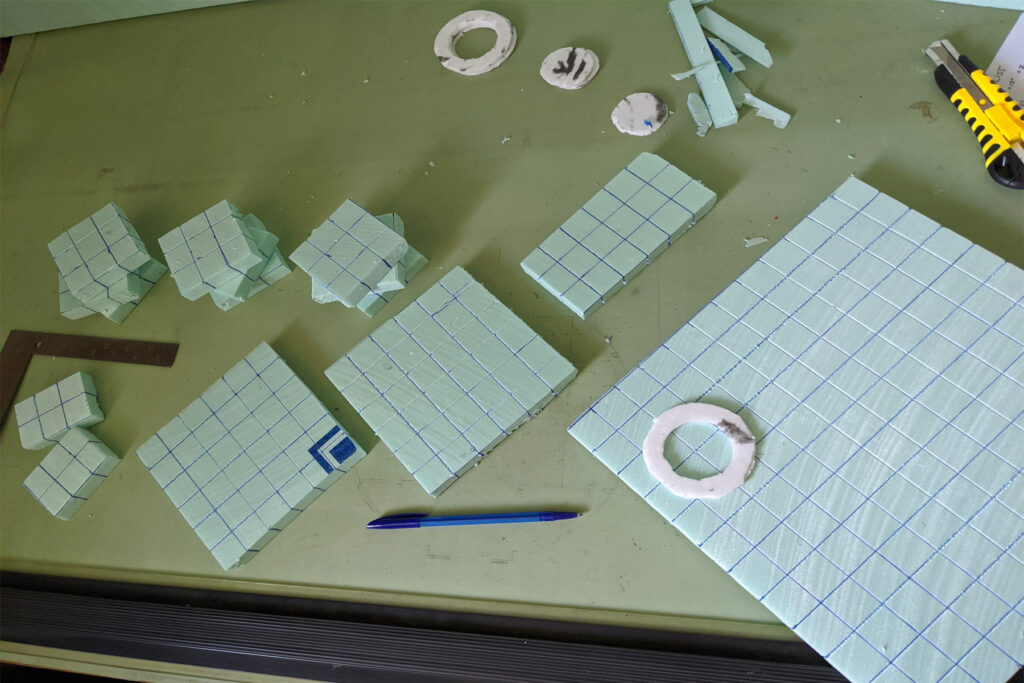
Once all the parts were cut, I laid out a 1” x 1” grid on all the tiles. This is the size of a large number of standard miniature bases and provides a convenient method for estimating distances at scale. I also added in a number of imperfections using the ball point pen. The idea was to gouge the foam. This would allow paint to get into the cracks and show the variations when painted. When I was painting I discovered that I probably needed to apply more pressure when creating my textures and adding cracks. I don’t think I went deep enough in many cases, so the paint mostly filled some of the cracks I made. As a YouTube crafter I follow said, “Crack to taste”. I did. I’ll do better next time.
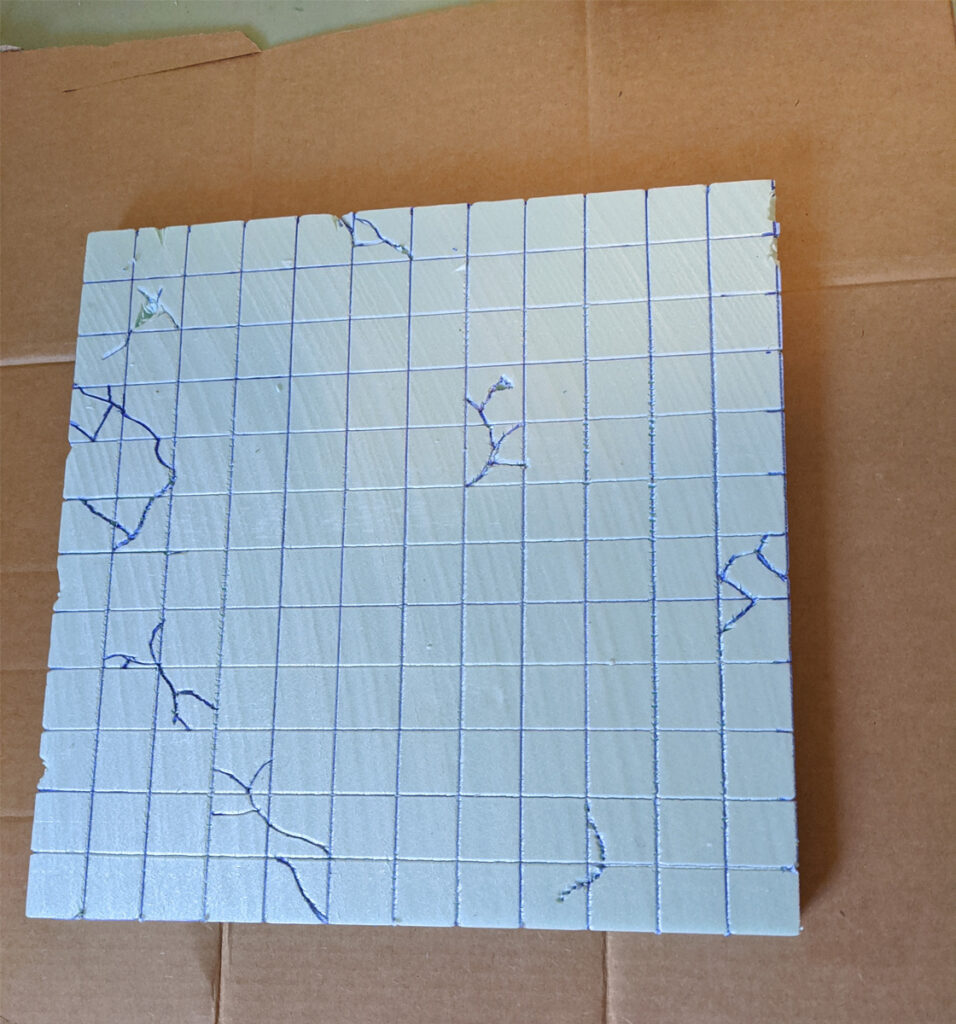
Once all the parts were set it was time to paint. It’s been a long time since I attempted to judge how much paint I might need in order to cover various miniature parts. I managed not to waste too much in my multiple coats. Black was first. I watered down a little bit of straight up black craft paint and covered them all. This would show up as deeper shadows whenever the rest of the paint was applied and didn’t seep down into all the cracks. Just had to wait for it to dry.
Once that was dry, it was on to a gray coat. This gray was applied pretty heavily. I was afraid that I had over done it when I finished with the gray. Some of the cracks had filled in. It was hard to see the texture. I wasn’t super happy, but I was this far along, I just needed to keep rolling. And wait for it to dry… again.
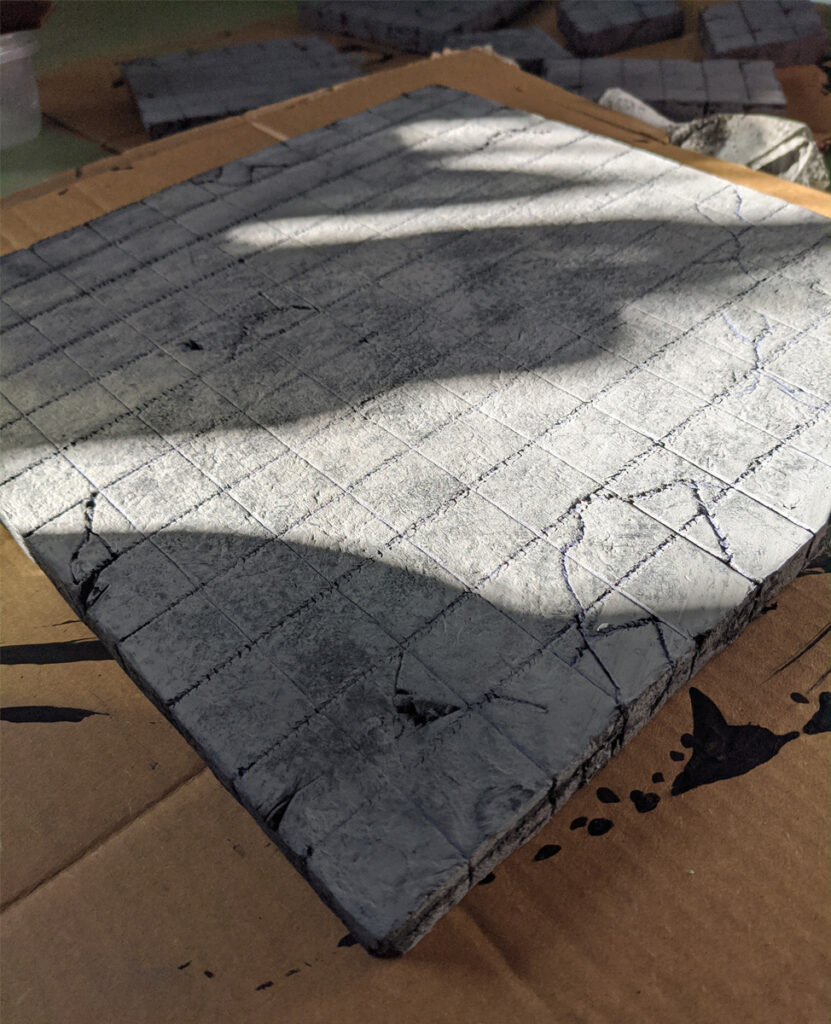
Next up was a dry brush over the high points. I misjudged the amount of paint a couple of times and my brush was not nearly as ‘dry’ as it was supposed to be. I used some paper towel and dabbed the excess back off when I could. I mixed a light (dolphin) gray along with a color called blue stoneware. It gave things a bit of a blueish tint, but that’s OK. It was what I was going for.
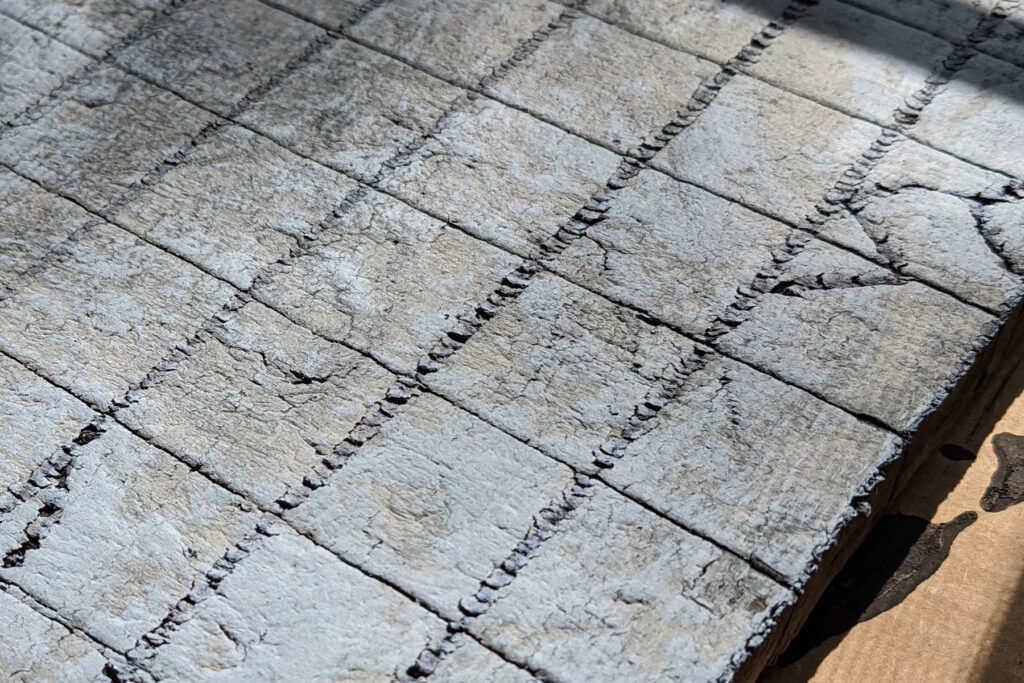
Just had to wait for things to dry… again.

Once that bit was done, it was on to the wash. Back to black, but super watered down. I forgot to add in any sort of green or brown to add a feel of “grime” to this part, but I was just happy to be moving on. Looking back, I might have wanted to give each step a little more thought. As I said above, nobody’s a pro on day one.
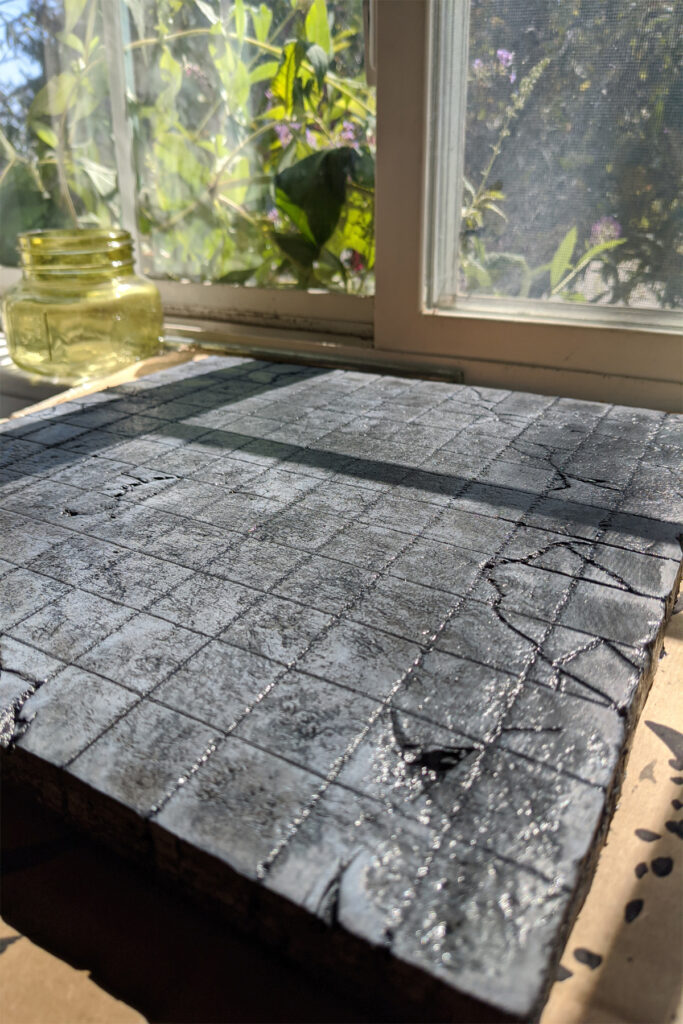
As things turned out, I’m a lot happier with them after all the steps were finished. So now it’s just a matter of sealing things up with a glue wash and stacking these up. Ready for my next gaming session! I’m calling this a success and I’m already looking forward to making more stuff.
Have you made anything lately?
